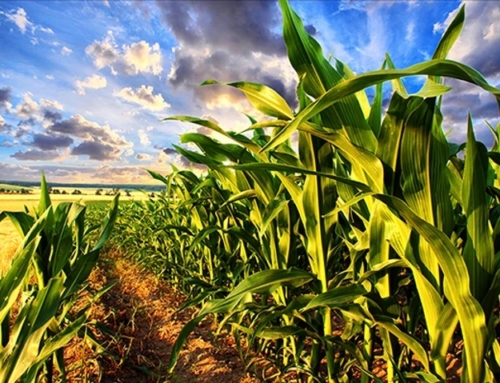The impacts of climate change are causing increasing public concern about the resulting risks that are facing us. According to a report published last year by the Pew Research Center, sixty-three percent of American adults say global climate change is affecting their community, and sixty-five percent say the federal government is doing too little to reduce the effects of climate change.[1]
And, while significant efforts at all levels of government over the past twenty to thirty years have been aimed at reducing greenhouse gas emissions, far less attention has been paid to finding ways to adapt to the adverse impacts of climate change, both nationally and locally.
What Can We Expect in the San Diego Region?
Due to our geographical location and unique physical setting, the San Diego region is susceptible to a host of threats to our quality of life and to our natural environment. Already, average temperatures are increasing, sea levels are rising, wildfire hazards are mounting, and sporadic winter storms continue, with the possibility of a co-occurrence of a sequence of these events becoming more likely. San Diego’s Mediterranean climate and coastline, which attract so many people to live and work here, are part of what makes the region vulnerable to the impacts of climate change. Science-based projections indicate that the ambient temperatures in our region will gradually increase, leading to greater wildfire risk caused by enhanced drying of San Diego’s landscapes. Projected changes in the precipitation regime may delay the onset of fall precipitation leaving the landscapes parched into the peak of the Santa Ana Wind season; Santa Ana winds have historically has fanned the region’s most devastating wildfires. This situation is made even worse by the increasing probability of droughts, resulting from spells of diminished precipitation. And, although the San Diego region may become drier overall, the most extreme precipitation events are projected to become even more extreme, potentially leading to increased flooding and erosion along rivers and creeks and at beaches and cliffs.[2]
How Should We Respond?
 Against this backdrop, a team of San Diego-based urban planners and research scientists, led by the authors of this article, recently published a research report entitled Collaborative Planning for Climate Resilience. Collaborative Planning for Climate Resilience | California Nevada Applications Program (ucsd.edu) In the words of the report, “the primary purpose of this report is to promote collaborative and science-based climate resilience planning that will build on existing plans and related research, and that will broaden our vision to take on the new challenges we face as a result of climate impacts. The report sets forth a proposed Framework for climate resilience planning in the San Diego region, which will serve as the basis for evaluating and adapting to the impending threats posed by climate change, some of which are unique to our region and many of which are already being experienced in other regions across the United States.”
Against this backdrop, a team of San Diego-based urban planners and research scientists, led by the authors of this article, recently published a research report entitled Collaborative Planning for Climate Resilience. Collaborative Planning for Climate Resilience | California Nevada Applications Program (ucsd.edu) In the words of the report, “the primary purpose of this report is to promote collaborative and science-based climate resilience planning that will build on existing plans and related research, and that will broaden our vision to take on the new challenges we face as a result of climate impacts. The report sets forth a proposed Framework for climate resilience planning in the San Diego region, which will serve as the basis for evaluating and adapting to the impending threats posed by climate change, some of which are unique to our region and many of which are already being experienced in other regions across the United States.”
Production of this report was itself a collaborative effort led by urban planners from the American Planning Association’s Regional and Intergovernmental Planning Division and research scientists from the Scripps Institution of Oceanography, San Diego State University, and other research organizations. The report also benefitted greatly from comments and suggestions made by external reviewers, representing a broad range of agencies, organizations, and interests. According to the authors, “our overriding goal has been to produce a report that identifies practical ways for different sectors of the community to join together in solving one of the greatest challenges of our time.”
 Although climate change poses difficult challenges to the San Diego region, science-based collaborative planning and applied research by key public agencies, research organizations, and other participants can make this region more resilient, thereby minimizing negative impacts to our natural environment, our economic base, and our overall quality of life. Local and regional planning processes laying the groundwork for climate resilience and adaptation in the region have already begun, but much more work is needed. In the short run, public agencies and other stakeholders are already in transition to living with an ever-evolving “new normal” in responding to the impacts of climate change. In the long run, significant changes will be required in land use, resource management, and other practices that underlie the region’s vulnerability to climate-related impacts.
Although climate change poses difficult challenges to the San Diego region, science-based collaborative planning and applied research by key public agencies, research organizations, and other participants can make this region more resilient, thereby minimizing negative impacts to our natural environment, our economic base, and our overall quality of life. Local and regional planning processes laying the groundwork for climate resilience and adaptation in the region have already begun, but much more work is needed. In the short run, public agencies and other stakeholders are already in transition to living with an ever-evolving “new normal” in responding to the impacts of climate change. In the long run, significant changes will be required in land use, resource management, and other practices that underlie the region’s vulnerability to climate-related impacts.
Which Plans Require our Attention?
An important aspect of designing an effective planning framework is the identification of those regional and local plans that should be analyzed by responsible public agencies regarding their compliance with California planning laws regarding climate resilience and adaptation planning. The results of this analysis can then be used to determine whether: (i) the public agency is required to amend its plan to comply with applicable laws and regulations; or (ii) the public agency is required to prepare and adopt a new plan in order to comply with these requirements. The California Adaptation Planning Guide https://www.caloes.ca.gov/HazardMitigationSite/Documents/CA-Adaptation-Planning-Guide-FINAL-June-2020-Accessible.pdf and the California General Plan Guidelines General Plan Guidelines (ca.gov) provide official guidance from the State on these requirements. Based on consideration of these guidance documents and review of existing plans for the San Diego region, the authors identified several plans that should be given serious attention. These plans are listed below.
One of the major findings of our report is that the regional and subregional plans listed above provide the best opportunities for conducting the type of science-based climate impact analysis that is needed in order for us to obtain a clear picture of our current and future adaptation needs. In addition, there are other critical systems in our region such as energy and agriculture that warrant further analysis with regard to the impacts that climate change will have on them. As these regional and subregional plans are updated, these plans can be used to inform local general plan elements and other local plans with regard to the climate-related adaptation needs that should be considered.
What Happens Next?
 The publication of this report represents a major milestone in an ongoing effort by local planners and climate scientists to lay out a framework for future action on climate adaptation and resilience planning in the San Diego Region. In addition to making presentations on this report to a variety of audiences, the authors are currently producing an Executive Summary that will lay out our findings and recommendations in concise terms and will provide a roadmap for future critical decisions. The overriding goal is to trigger the actions needed to lead us to a more sustainable and resilient future for the San Diego region in the face of the mounting challenges of climate change.
The publication of this report represents a major milestone in an ongoing effort by local planners and climate scientists to lay out a framework for future action on climate adaptation and resilience planning in the San Diego Region. In addition to making presentations on this report to a variety of audiences, the authors are currently producing an Executive Summary that will lay out our findings and recommendations in concise terms and will provide a roadmap for future critical decisions. The overriding goal is to trigger the actions needed to lead us to a more sustainable and resilient future for the San Diego region in the face of the mounting challenges of climate change.
Article by STAY COOL Advisor Robert Leiter, Julie Kalansky and Cary Lowe.
_______________________________________
[1] “Two-Thirds of Americans Think Government Should Do More on Climate,” Pew Research Center, 6/23/20.
[2] See: Kalansky, Julie, Dan Cayan, Kate Barba, Laura Walsh, Kimberly Brouwer, Dani Boudreau (University of California, San Diego). 2018. San Diego Region Report. California’s Fourth Climate Change Assessment. Publication number: SUM-CCCA4-2018-009.San Diego Region Report (ca.gov)





